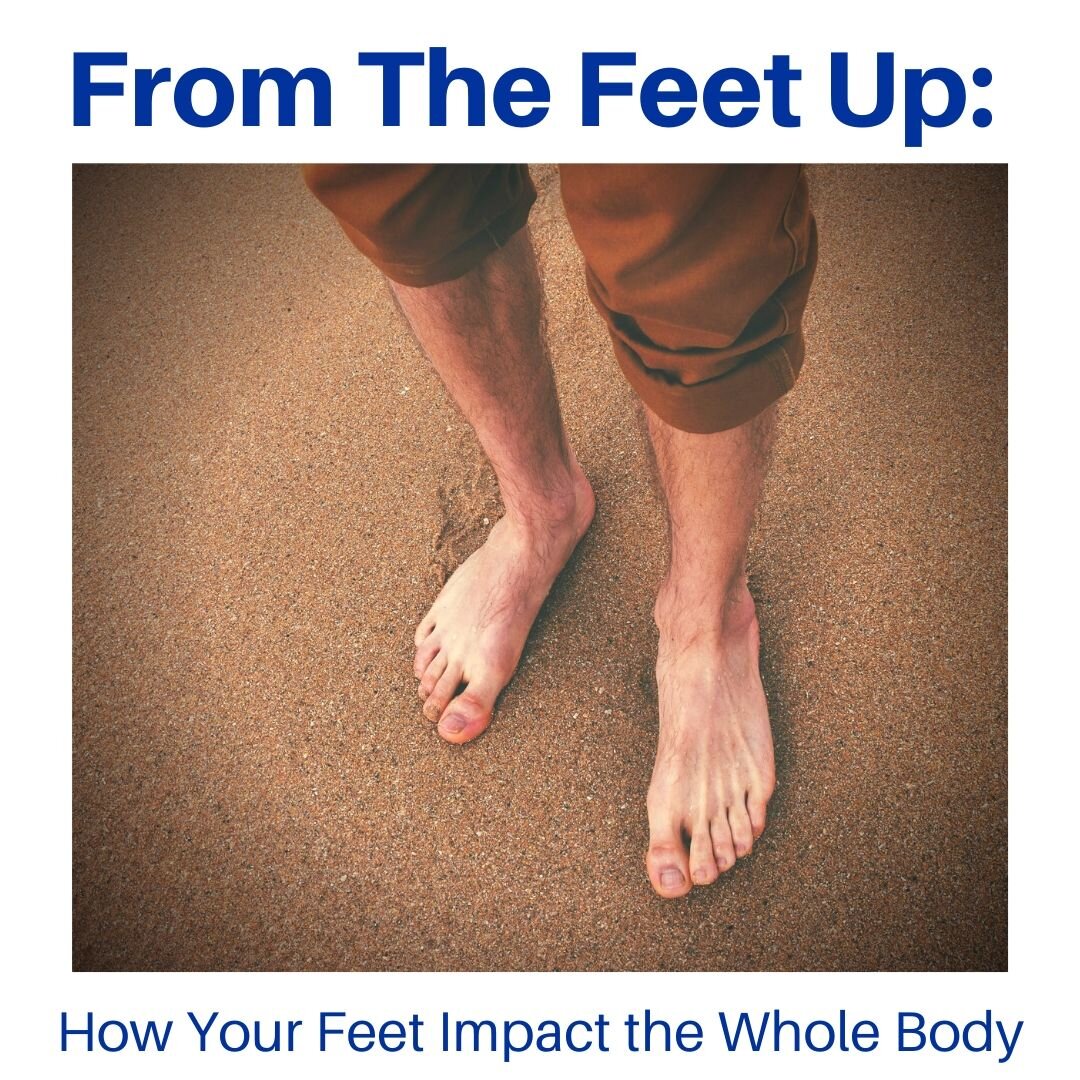As the song goes: Your foot bone’s connected to your leg bone, your leg bone’s connected to your hip bone, your hip bone connected to your back bone… to your shoulder bone, to your neck bone… It all starts with the feet. As the foundation of your body, foot problems can throw your whole body out of alignment. Foot mechanics affect the way you move, whether you’re walking, running, doing yoga, or any number of activities. The ways your foot moves (or doesn’t) will trickle up the body, leading to altered mechanics in other areas as well.
The two main ways feet can alter body mechanics are over-pronation and under-pronation (supination). People who over-pronate their feet are often referred to as having “flat feet” or “fallen arches.” The feet roll to the inside, dumping weight into the inner arch of the foot, possibly due to structural issues, or as a result of previous injuries. Under-pronation is also known as supination and is less common. Often people who have high arches supinate the feet, rolling the weight onto the outer edges & compromising shock-absorption. In either of these cases, the surrounding bones and muscles have to work differently to maintain your posture and balance. Over time, this can lead to tension in various parts of your body, including the calves, knees, hips, and back, and can even lead to injury.
A 2016 study of foot pronation was able to document essentially exactly what that childhood song was talking about: excessive foot pronation leads to increased internal rotation of the femur which results in anterior pelvic tilt. Because the pelvis is connected to the sacrum — the very bottom of the spine — these alterations can cause lumbar lordosis and cervical kyphosis in the spine. Due to structural differences, the correlation between foot pronation and low back pain was more prevalent in women.
Even without an adjusted gait, our modern lives are very different for our feet than for our ancestors’ feet. People spend much more time sitting than walking, and when we are walking it’s usually on unvaried, hard surfaces. This means the small bones and ligaments in the foot are only using a limited range of motion. When we walk on more uneven, varied surfaces, the minute muscles and ligaments of the foot and ankle are constantly making micro-adjustments to keep us balanced, resulting in agile, flexible feet and body. Walking on predictable, hard surfaces typically results in a clumping effect: the feet, ankles, and lower back become solid and fixed instead of sensitive and minutely adjustable. This rigidity, especially in the back of our bodies, leave the feet, pelvis, and lower back vulnerable to displacement.
So, what can we do for healthy feet? Activities like hiking can be great for developing awareness and mobility in the feet and ankles. Start small with simple trails. Just getting your feet off the pavement will help! Walking barefoot while at home will also help develop awareness of your feet. Give your toes some no-shoe time to spread out and do their toe thing! Practice balancing on one foot, especially with no shoes on. You’ll start to feel all those little muscles of the foot and ankle activate to keep you balanced. It can also help to foam roll, stretch, and strengthen other muscles up the anatomical chain like the calf muscles, IT band, hamstrings, and glutes.



